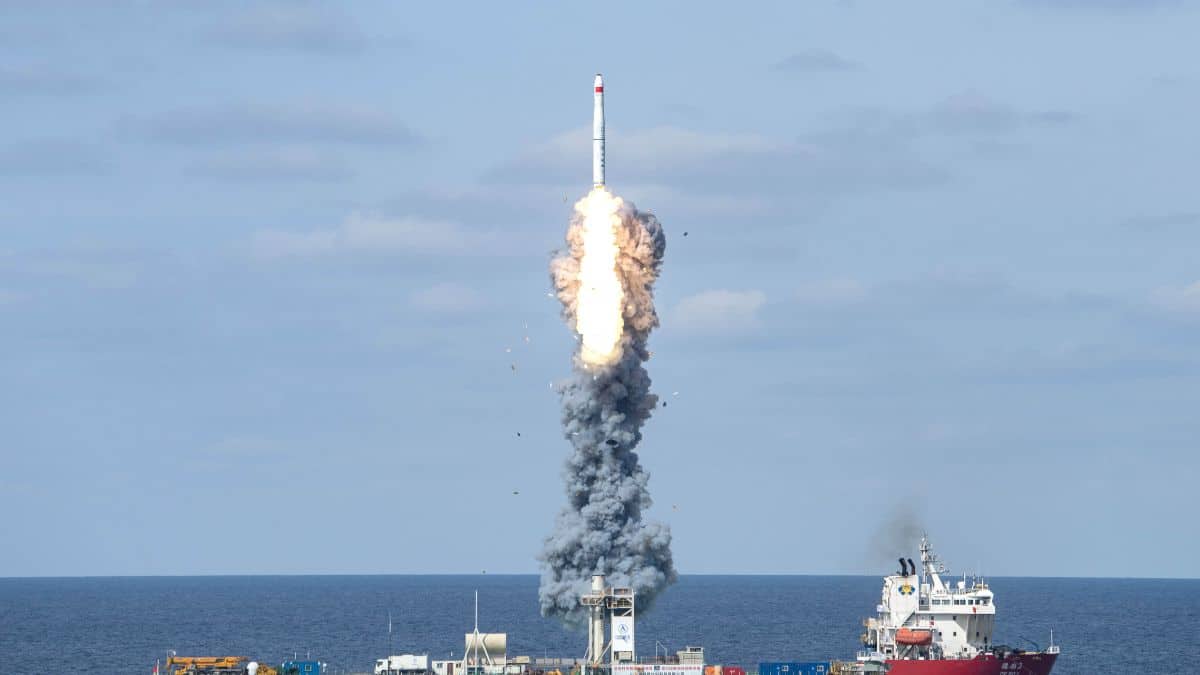 Image Credits - SCMP
Image Credits - SCMP
On February 2nd, 2024, China made a bold statement about its ambitions in the space industry with two separate rocket launches within a few hours. In a display of its growing capabilities, the nation sent a total of 20 satellites hurtling towards their designated orbits, each carrying the promise of diverse functionalities and advancements.
The first launch, conducted from the Xichang Satellite Launch Center in southwestern China, saw an iconic Long March 2C rocket taking to the skies. Its payload held 11 satellites, all destined to become part of the ambitious “Geely Future Mobility Constellation.” This constellation, envisioned to ultimately encompass 240 satellites, represents a significant step towards revolutionizing the future of transportation.
Its focus lies in enabling autonomous driving, enhancing smart connectivity, and providing a plethora of other services aimed at streamlining and transforming mobility experiences. The 11 satellites launched represent a mere fraction of the grand vision. When complete, the Geely constellation will seamlessly integrate communication, navigation, and remote sensing capabilities, painting a picture of a future where vehicles seamlessly connect and their surroundings, paving the way for safer, more efficient, and potentially even autonomous commutes.
Interestingly, Geespace, the company behind the project, boasts that their satellites offer exceptional imaging capabilities, capturing resolutions between 1 and 5 meters, further aided by onboard AI functionalities. This level of detail could prove invaluable in real-time traffic monitoring, accident prevention, and even infrastructure management.
Just hours later, China showcased another facet of its space program with the second launch of the Jielong-3, a solid-fuel rocket deployed from a mobile sea platform. This marked a significant milestone, being the second successful launch of the Jielong-3 within a mere two months, highlighting China’s rapid advancements in launch technology.
While details regarding the specific functions of the nine satellites carried by the Jielong-3 remain undisclosed, their diverse purposes paint a picture of a nation actively pursuing scientific and technological progress on multiple fronts. These launches signify more than just technological prowess; they represent China’s growing confidence and ambition in the spacefaring arena.
The Geely constellation symbolizes a paradigm shift in the transportation sector, with the potential to reshape the way we travel and interact with our surroundings. The diverse satellites carried by the Jielong-3, on the other hand, hint at a broader push towards scientific exploration and discovery. While the long-term implications of these launches remain to be seen, one thing is certain: China has taken a giant leap forward in its space program.
These successful missions not only demonstrate the nation’s technical capabilities but also underscore its commitment to innovation and its determination to carve a unique path in the ever-evolving landscape of space exploration. As the world looks skyward, it is clear that China is no longer just a participant in the space race, but a potential leader with its sights set firmly on the future.
